Playing with Sticks

If you’ve been fortunate enough to visit The Morton Arboretum in Lisle, Illinois, or driven by the Arboretum on Interstate 88, you may have spotted Joe the Guardian, a 20-foot-tall, spear-wielding troll peering down at the passing cars from atop his grassy berm. Joe is just one of six towering troll statues created by Danish artist Thomas Dambo. Fashioned from repurposed wood and other natural materials foraged from the Arboretum’s vast acreage, these incredibly detailed trolls have been delighting and inspiring visitors of all ages since they were installed as a temporary exhibition in Spring 2018.
I like to say that Dambo never lost his childhood love of playing with loose parts. If you’ve followed my blog, you know about my own passion for using loose parts in early childhood classrooms! Some of our students have been fortunate enough to visit the trolls on weekends—and they are always eager to share their tall troll tales with their friends on Monday mornings.
Here’s some rare good news in a year that has had more than its share of bad news: The pandemic that has interrupted life as we know it has also put a pause on the trolls moving on! If you have a chance to visit the Morton Arboretum before the end of the year, it’s worth a trip. Turn off those screens, get out of the house and breathe in some fresh air. This is STEAM learning in action that will inspire your own loose-parts play!
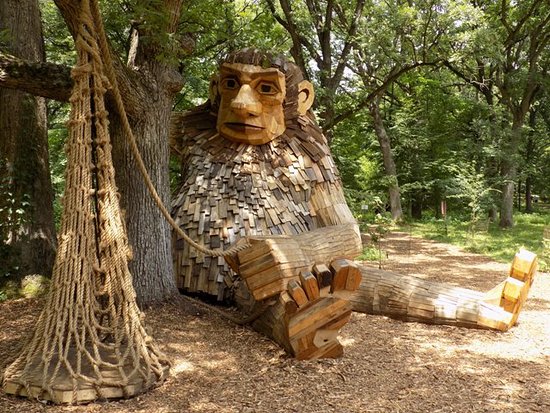
The Troll Hunt features a collection of trolls constructed from reclaimed wood. But these woody behemoths are 15 to 30 feet tall—a bit more than our gang is capable of constructing. Creating more diminutive trolls is definitely more our speed.
After several weeks of Monday-morning reports of troll sightings at the Arboretum, I took advantage of the trend. First, I printed out photos of the trolls to inspire our early learners to create their own versions of these mythical woodland creatures. Next, we sorted all of our loose parts into baskets and small bowls. Then we created trolls of various shapes and sizes out of small sticks, tree cookies, leaves, buckeyes, corks, shells and fabric—using bits of clay to connect the loose parts.
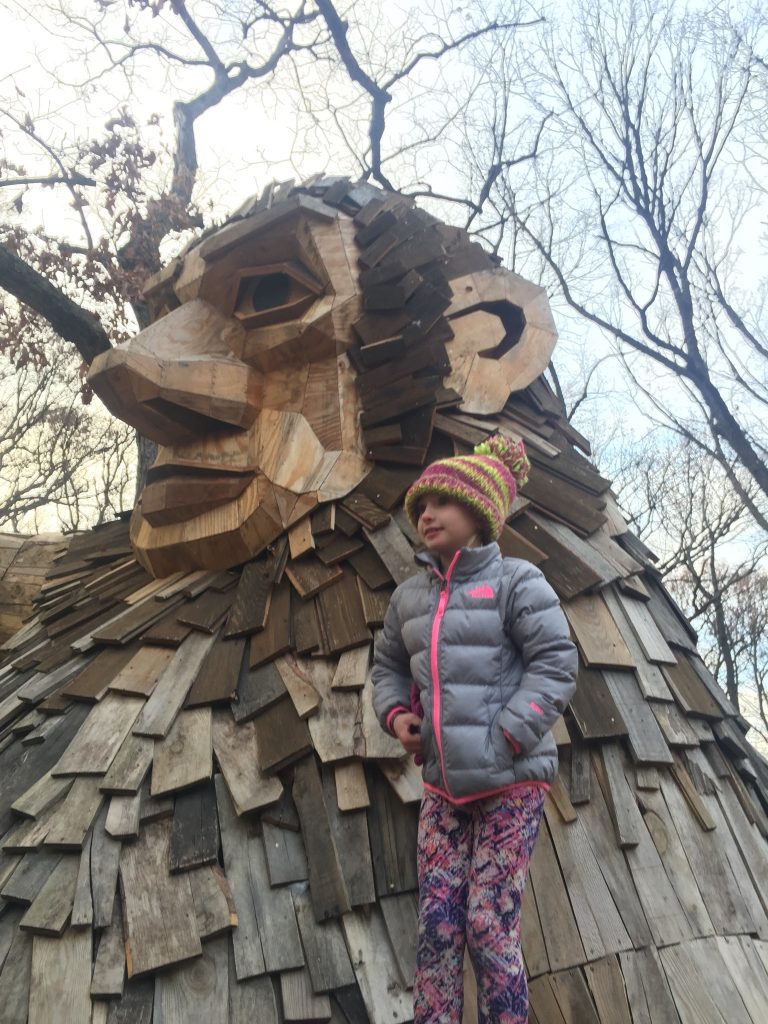
Architect Simon Nicholson first introduced the concept of loose parts back in the 1970s. Nicholson believed that we are all creative and that loose parts inspire children to engage in experimental, creative play, which is beneficial for child development.
What exactly are loose parts? They are materials that can be moved, carried, combined, redesigned, lined up and taken apart and put back together in multiple ways. They are materials with no specific set of directions that can be used alone or combined with other materials. (Kabel, 2010)
We like to think of loose parts as shells, rocks, sticks, acorns, feathers, pinecones, flowers, flower petals, fabric, water, sand, dirt, moss, leaves, bark, rocks, pebbles, pine needles, seeds and whatever else is native to your region. But we can also use blocks, people, animals and other manipulatives. Loose parts can range from dramatic play props to toy cars, pots, pans or pouring devices.
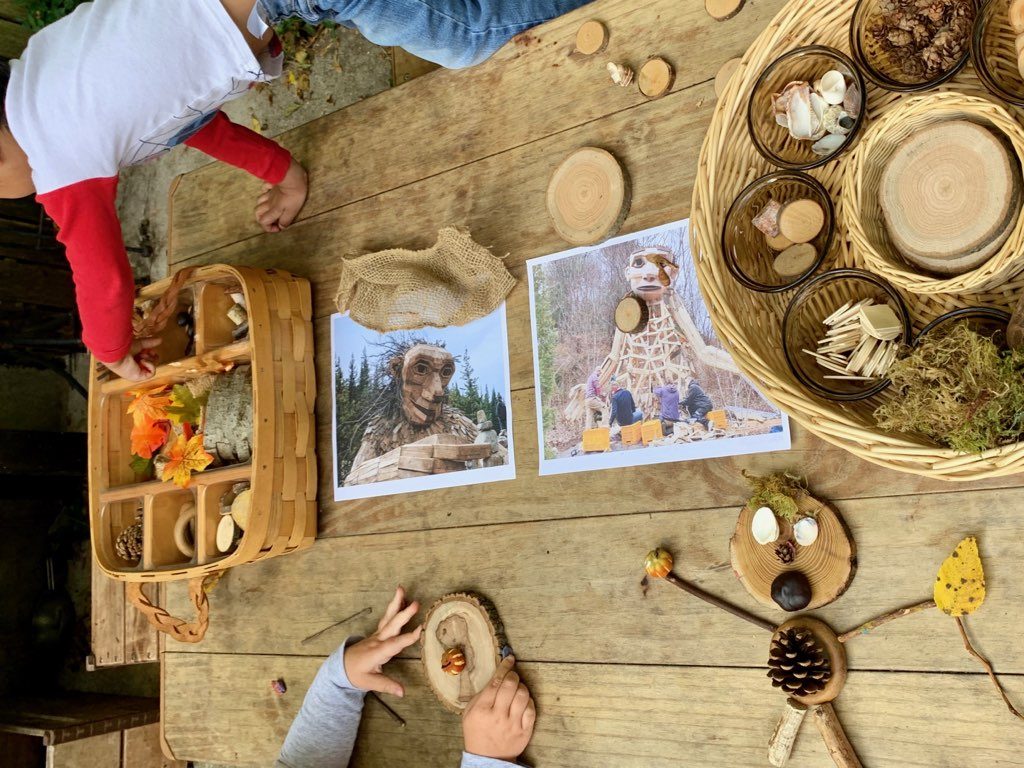
After studying the photos to determine the materials that were used to create the trolls at the Arboretum, the children noted that the hair on Dambo’s trolls was made from branches and observed the intricate detail on the troll faces and toenails.
Then they began to build their own trolls. At first, the children created two-dimensional trolls. But, as the troll workshop continued and they became more confident and creative in their use of loose parts, they began building in three dimensions.
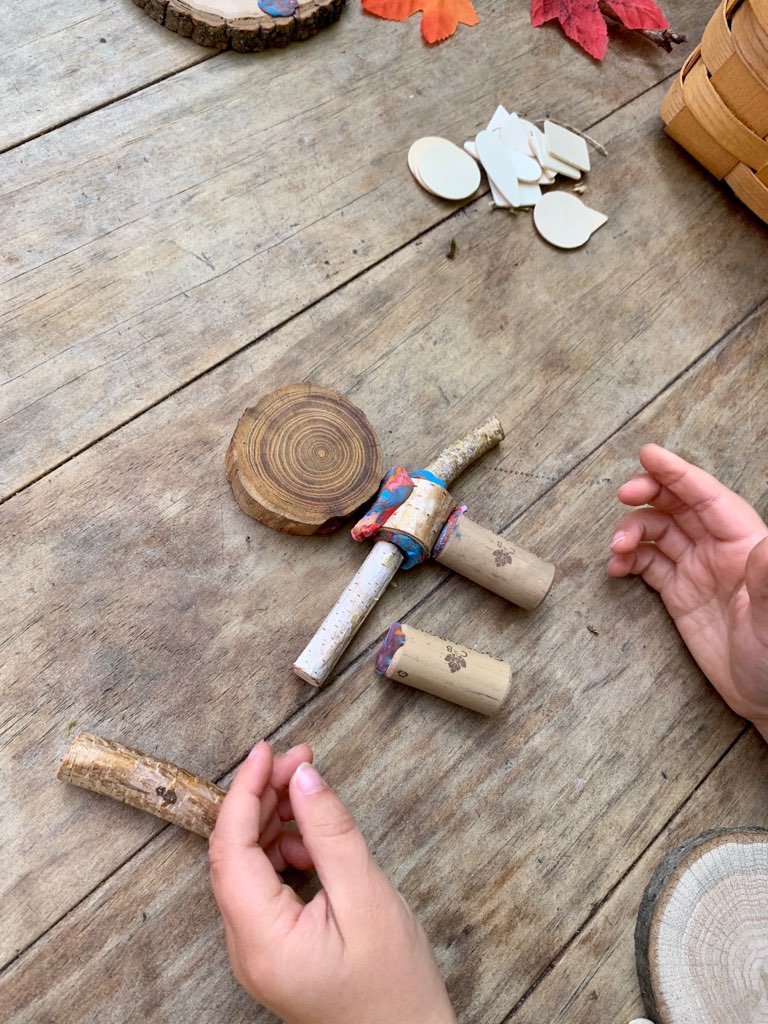
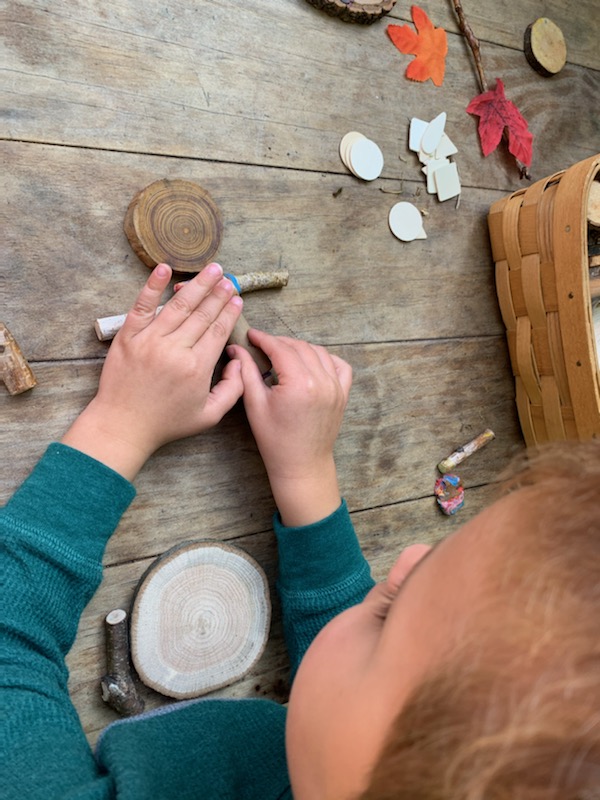

“I need a leg that is the same size as his arms! See? These legs are too little!”
Jamie was not happy with his troll’s appearance. Digging through the bowl of small twigs, he discovered a longer “leg” and kept digging until he found another that satisfied him. Jamie was busy measuring, sorting and comparing his loose parts, employing nonstandard units of measurement. Sure enough, he was knocking out those early learning standards through play once more! This was a morning spent exploring concepts such as symmetry, geometric shapes and spatial awareness (how things fit in front, behind, next to or underneath something). Recognizing, predicting and building patterns are all important early math and science skills that lay the foundation for later STEM and STEAM learning.
As they engaged in these simple experiences, the children were becoming more proficient at problem-solving, reasoning, predicting and making connections in the world around them. By creating these opportunities for children to see the world through a different lens as they play with loose parts, we open up new avenues of exploration and discovery.

“Sally, you are using shells for your troll’s eyes,” Noa pointed out to her friend. “I used pine cones!”
By observing, asking questions and drawing conclusions, children develop scientific skills. Comparing and describing physical properties while creating their trolls allowed our young learners to think out loud and try out new ideas. When the children weren’t satisfied with how something looked, they would often rearrange the loose parts or start all over again. There was no anger or frustration—just calm exploration.

“Where did you find that grassy stuff for your hair?” Noa asked Sally. But Sally was deep in a state of creative flow. Sally often incorporates fabric into her creations and proceeds more slowly than her peers. But she is very deliberate about her choices. All of this takes time. We don’t need to look at the clock and decide when this activity should end. We can let the children decide. On this fall morning, the troll table sparked a play buzz that lasted for more than two hours as our troll makers followed their curiosity, becoming more confident as they took advantage of new opportunities to engage in art, math and science.

We rarely take walks without bringing home all kinds of loose parts—what the children refer to as “treasures.” If your child keeps small items in containers to create “things” with, your child is playing with loose parts! Take advantage of what you have around you. Those are your tools for setting up a math- and science-rich environment.
If you haven’t experienced the Troll Hunt at the Morton Arboretum, autumn is a great time to visit the Arboretum’s beautiful grounds and maybe find some loose parts along the way. Just be sure to call first to make an appointment, as the Arboretum is enforcing social-distancing measures to ensure visitors’ safety. Don’t forget to check into a membership when you pay for admission. That membership is your ticket to a full year of adventures at more than 300 gardens around the United States. It is a great investment or gift idea. Consider it a year of math and science curriculum as we hit the pause button on life to collect loose parts and scout out those magical, mythical trolls. Happy hunting!
Looks like so much fun. I would love to take my daughter there!
I went to the Arboretum a couple of years back and this was not there yet. This is definitely a place I would take my nieces and nephews to.
I love the idea of loose parts and letting kids build what they want with them. I would love to go to the Troll Hunt.
it would be fun for the children to use sticks and recycled wood wo make their own “trolls” and compare heights and differences
I would take my nephew there and start counting all the trolls that we see.
Thank you for this idea to use loose parts to create. I can see the kids in our daycare enjoying playtime with loose parts and the discussions that can follow.
What an amazing and fun activity. So many math skills to be demonstrated in building and designing.
Love these ideas!
I enjoyed the Playing with sticks Blog. The trolls were really life like and I, especially, liked how the children were welcomed (giving the troll a big hug)
the creativity of the trolls in the forest.
I have been living in Illinois for 6 years and never knew this existed. I love how at the end of their adventure children can make something to remember their trip by. Playing with nature is really an important part of play an learning.
This activity sounds like a great way to get kids out into nature, while having fun collecting items to build an object and then compare the different sizes and widths. I been to Morton Arboretum a few times and the kids always loved running around discovering, playing and being outside. Great activity to add for a future trip.
Very interesting. I would love to visit.
I am loving the way it all looks!
I love that the children used natural things to create the art, I think the children would love gathering those kinds of things to create a picture from what they see.
Love how they can use things from nature for art..
I love this!! I’m pretty close to the Arboretum, so I’ll have to get out there when I have a chance. Using found objects/loose parts from nature is very much my teaching style, so this activity is perfect! For younger children, we love making dragonflies out of twigs, glue, and maple keys (and later paint, of course!).
I love this activity! This is another activity using nature and those are the best!